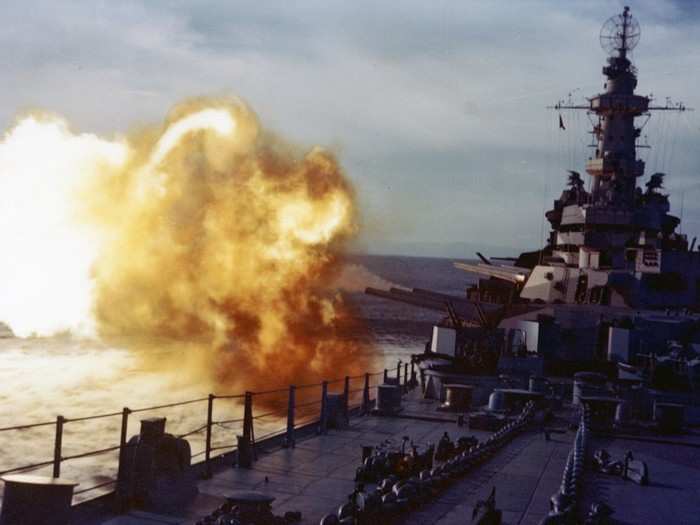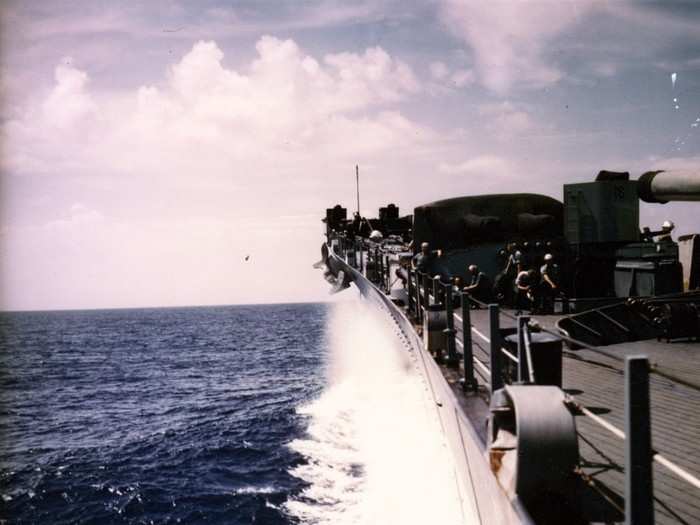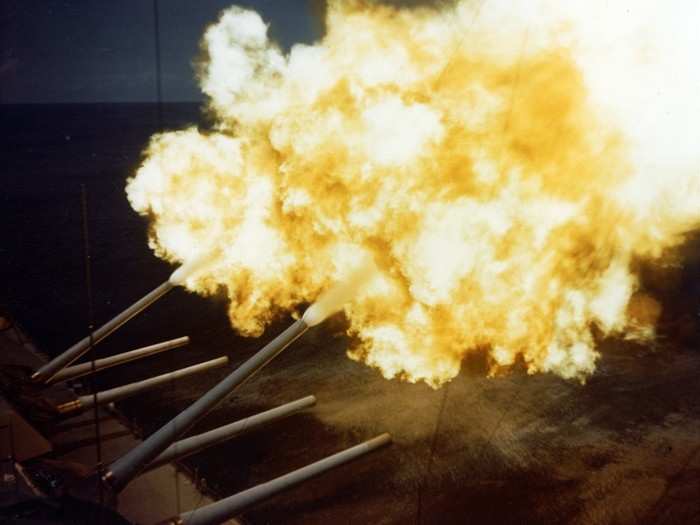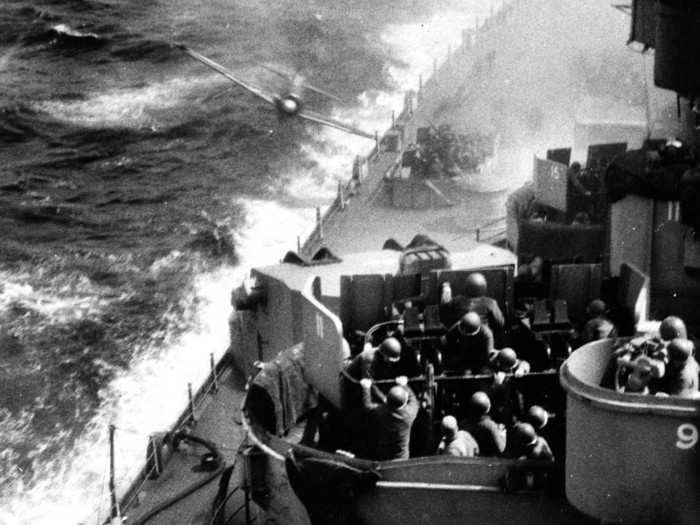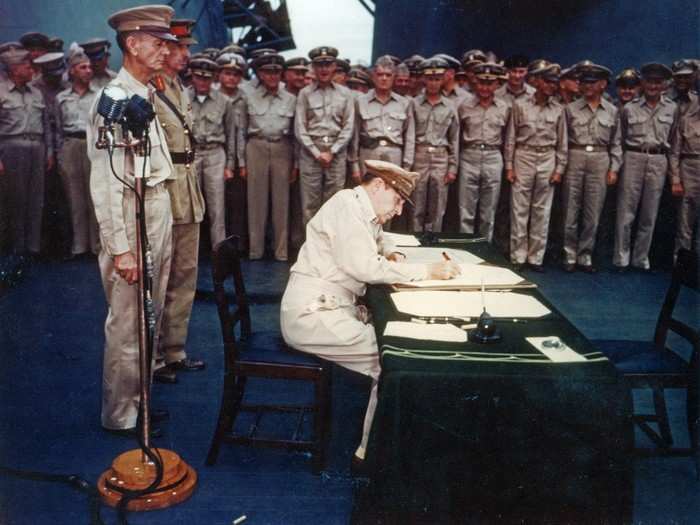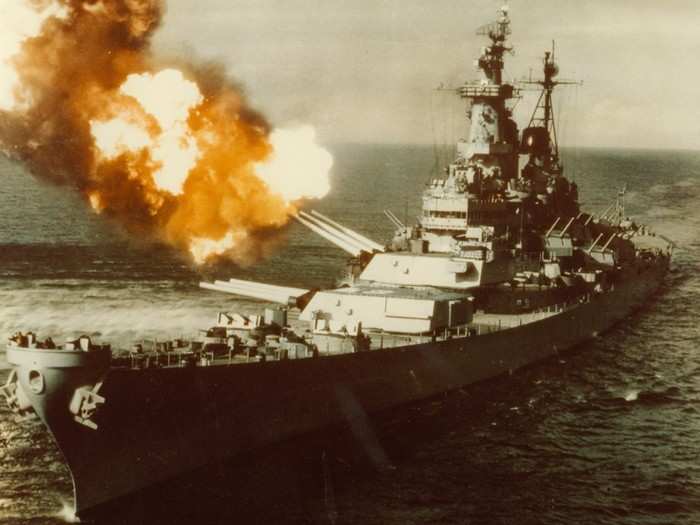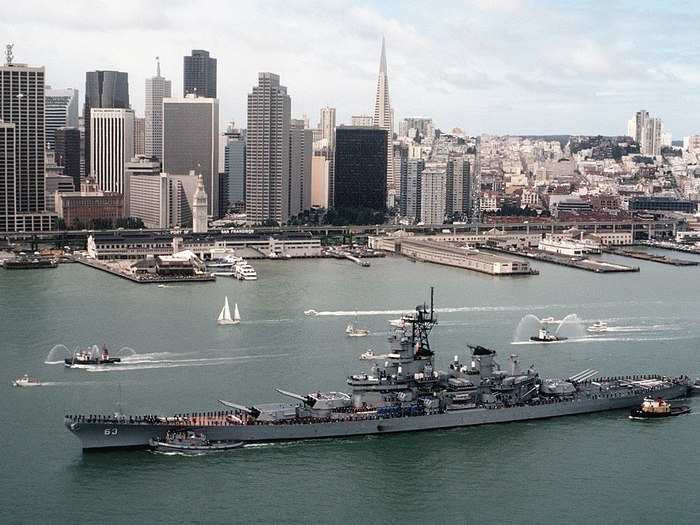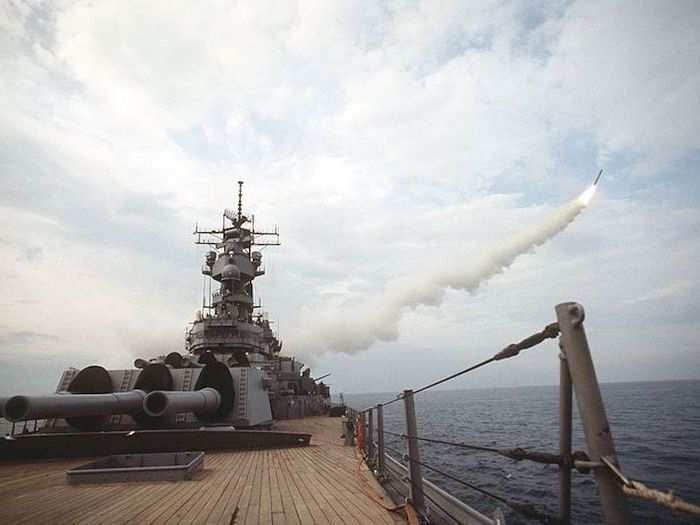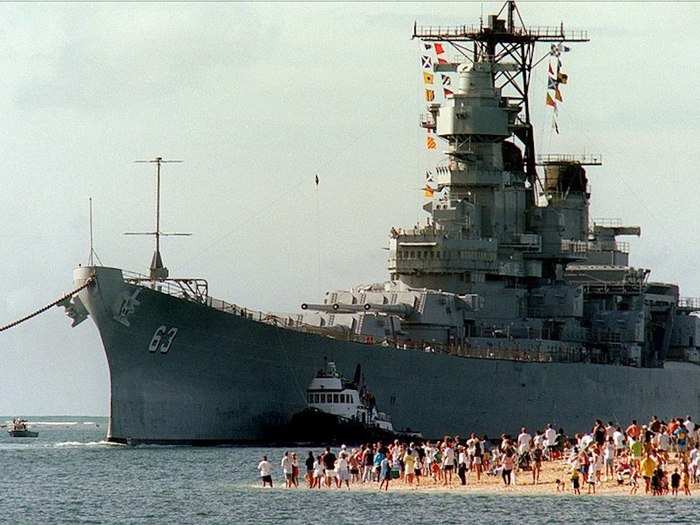As an Iowa-class battleship, the most powerful class of battleships, the Missouri was armed with nine huge 16-inch guns, 20 five-inch guns, 80 40mm anti-aircraft guns, and 49 20mm anti-aircraft guns.
The Mighty Mo sailed the Mediterranean in 1946 in a show of force against Soviet incursion. Four years later, in September 1950, the battleship joined missions as part of the Korean War.
As the flagship of Vice Adm. A. D. Struble, who commanded the 7th Fleet, the Missouri bombed Wonsan, and the Chonjin and Tanchon areas in October 1950. For the next three years, the Mighty Mo would bombard several other areas too, including Chaho, Wonsan, Hamhung, and Hungnam.
The Mighty Mo was later decommissioned, for the first time, in February 1955 at the Puget Sound Naval Shipyard.
Source: US Navy
But in 1986, with the Cold War still raging, the Mighty Mo was brought back to life as part of the Navy's new strategy that sent naval task groups into Soviet waters in case of a future conflict.
The Navy also modernized the Mighty Mo as part of its recommissioning, removing some of its five-inch guns and installing Harpoon and Tomahawk cruise missiles, Stinger short-range surface-to-air missiles, and Phalanx close-in weapons systems.
Source: US Navy, The National Interest
And these new weapons were put to use during the Gulf War, where the Mighty Mo fired at least 28 cruise missiles, as well as several hundred 16" rounds, on Iraqi targets.
In fact, the Mighty Mo had a fairly close call on Feb. 23 when it was firing 16" rounds in support of an amphibious landing along the Kuwaiti shore.
The Missouri's loud 16" guns apparently attracted enemy attention, and the Iraqis fired an HY-2 Silkworm missile at the ship. But the British frigate HMS Gloucester came to its rescue, shooting the missile down with GWS-30 Sea Dart missiles.
Source: US Navy

